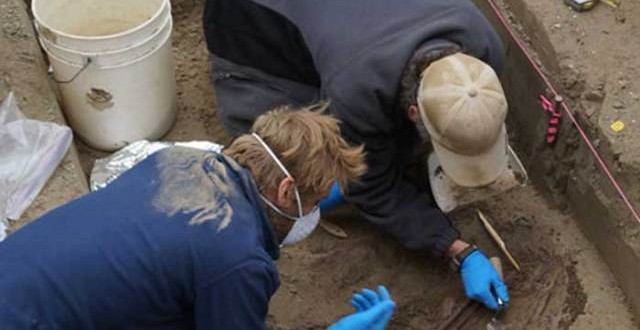An ancient Ice Age burial ground for infants discovered by archaeologists in Alaska has provided information about the first inhabitants of North America.
The remains of two ice-age infants, buried more than 11,000 years ago, are the youngest human remains of that era ever found in northern North America, according to a paper recently published in the Proceedings of the National Academy of Sciences.
Researchers found the remains in fall of 2013 at the Upward Sun River site, near the Tanana River — the same site where the cremated remains of a 3-year-old child were found in 2010. Dental and skeletal remains revealed one of the infants survived birth by a few weeks while the other died in the womb.
Also found were grave offerings that researchers are calling “unprecedented.” They include some of the oldest examples of hafted compound weapons in North America, which “may may reflect the importance of hunting implements in the burial ceremony and with the population as whole,” the paper says.
Dr. Ben Potter — an archaeology professor at the University of Alaska Fairbanks and the paper’s lead author — says the discovery has shed light on the continent’s earliest inhabitants, including their funeral practices, how they treated the youngest members of their tribe and other complex behaviors.
The finds are valuable because “there is little direct evidence about social organization and mortuary practices of such early human cultures, which had no written languages,” a UAF press release about the discovery says.
Archaeologists worked with local and regional Native tribal organizations for the research. The National Science Foundation funded the work.
Agencies/Canadajournal
 Canada Journal – News of the World Articles and videos to bring you the biggest Canadian news stories from across the country every day
Canada Journal – News of the World Articles and videos to bring you the biggest Canadian news stories from across the country every day



